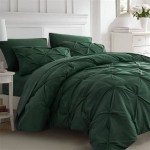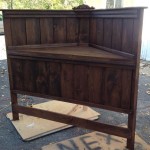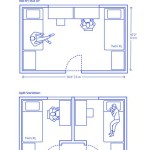Are Inflatable Beds Good?
Inflatable beds have gained popularity as a versatile and convenient sleeping solution for various scenarios, from camping trips and guest accommodations to temporary housing and medical needs. However, the question of whether they are "good" is subjective and depends on individual preferences, intended use, and specific requirements. This article explores the advantages and disadvantages of inflatable beds, providing a comprehensive overview to aid in making an informed decision.
Advantages of Inflatable Beds
Inflatable beds offer a range of advantages that make them appealing to different users. Here are some key benefits:
- Portability and Storage: Inflatable beds are designed to be compact and lightweight, making them easy to transport and store. When deflated, they fold down to a manageable size, suitable for travel bags, trunks, or closets. This portability makes them ideal for camping, backpacking, or moving to new locations.
- Comfort and Support: Advancements in inflatable bed technology have led to significant improvements in comfort and support. Many models feature built-in air chambers that adjust to body weight and distribute pressure evenly, providing a comfortable sleeping surface. Some also come with additional features like integrated pillows or adjustable firmness levels.
- Convenience and Versatility: Inflatable beds offer convenience and versatility for various situations. They can be quickly set up and inflated using an integrated electric pump or manual pump. This rapid setup makes them suitable for unexpected guests or temporary accommodation. They can also be used as alternative sleeping solutions in situations where traditional beds are not feasible, such as medical recovery, post-surgery care, or during renovations.
- Affordability: Compared to traditional mattresses, inflatable beds can be a more affordable option, especially for occasional use or temporary needs. There are various price ranges available, catering to different budgets and requirements.
- Hygiene and Cleanliness: The inflatable nature of these beds makes them inherently more hygienic than traditional mattresses. The smooth, non-porous surface is easy to clean, preventing dust mites and other allergens from accumulating. Many models also come with removable covers that can be washed regularly.
Disadvantages of Inflatable Beds
Despite their advantages, inflatable beds also have some drawbacks that need to be considered:
- Durability and Longevity: Inflatable beds, especially those made with lower-quality materials, may be prone to punctures or leaks. They are not as durable as traditional mattresses and generally have a shorter lifespan. Regular maintenance and proper handling are crucial to extend their longevity.
- Noise and Movement: Inflatable beds can sometimes generate noise, especially when moving on the surface. They may also move or shift during the night, depending on the firmness and quality of the bed. This can disrupt sleep and affect the overall comfort level.
- Limited Adjustability: Some inflatable beds may lack the adjustability that traditional beds offer. Features like adjustable height, firmness, or head and feet elevation may be limited or unavailable. This can be a drawback for individuals with specific needs or preferences.
- Temperature Sensitivity: Inflatable beds can be sensitive to temperature variations. In cold weather, they may feel cold to the touch, while in hot weather, they may retain heat and become uncomfortable. Some models come with built-in heating elements to address this issue.
Factors to Consider When Choosing an Inflatable Bed
When choosing an inflatable bed, it is crucial to consider several factors to ensure a comfortable and suitable experience:
- Intended Use: The intended use of the inflatable bed will determine the necessary features and specifications. For example, a camping bed will require portability and durability, while a medical bed may need specific safety features and comfort levels.
- Size and Dimensions: The size of the inflatable bed should be appropriate for the intended user and sleeping space. Consider the dimensions, weight capacity, and whether it can accommodate a single person or a couple.
- Comfort and Support: Different models offer varying levels of comfort and support. Consider features like air chambers, adjustable firmness, and integrated pillows to choose a bed that suits your individual needs.
- Materials and Construction: The quality of materials and construction will impact the durability, comfort, and lifespan of the inflatable bed. Look for strong, puncture-resistant fabrics and reliable air valves.
- Pump and Inflation System: Consider the type of pump, whether it is manual or electric, and the inflation time. Some models have built-in pumps that make the process faster and more convenient.
- Price and Budget: Inflatable beds are available in various price ranges. Set a budget and look for a model that offers the necessary features and quality within your affordability.
By carefully considering these advantages, disadvantages, and factors, individuals can make informed decisions when choosing an inflatable bed, selecting the best option that caters to their specific needs and preferences.

7 Best Air Mattresses Of 2024 Tested By Experts

The 2 Best Air Mattresses Of 2024 Reviews By Wirecutter

The Best Air Beds Of 2024 For Guests Staying Overnightwe Sleep On Job To Review Spare Rooms And Camping Trips Alike

How To Make An Air Mattress More Comfortable 2024 Clarity

The 2 Best Air Mattresses Of 2024 Reviews By Wirecutter

A Complete Guide To Air Mattresses Benefits Drawbacks And More Turmerry

The Best Air Beds Of 2024 For Guests Staying Overnightwe Sleep On Job To Review Spare Rooms And Camping Trips Alike

Intex Fiber Tech Dura Beam Super Queen Beige 1 52m Width Inflatable Air Bed Mattress Camping Beds Sleeping Gear Lazada Singapore

The Best Air Beds Of 2024 For Guests Staying Overnightwe Sleep On Job To Review Spare Rooms And Camping Trips Alike

The 2 Best Air Mattresses Of 2024 Reviews By Wirecutter







